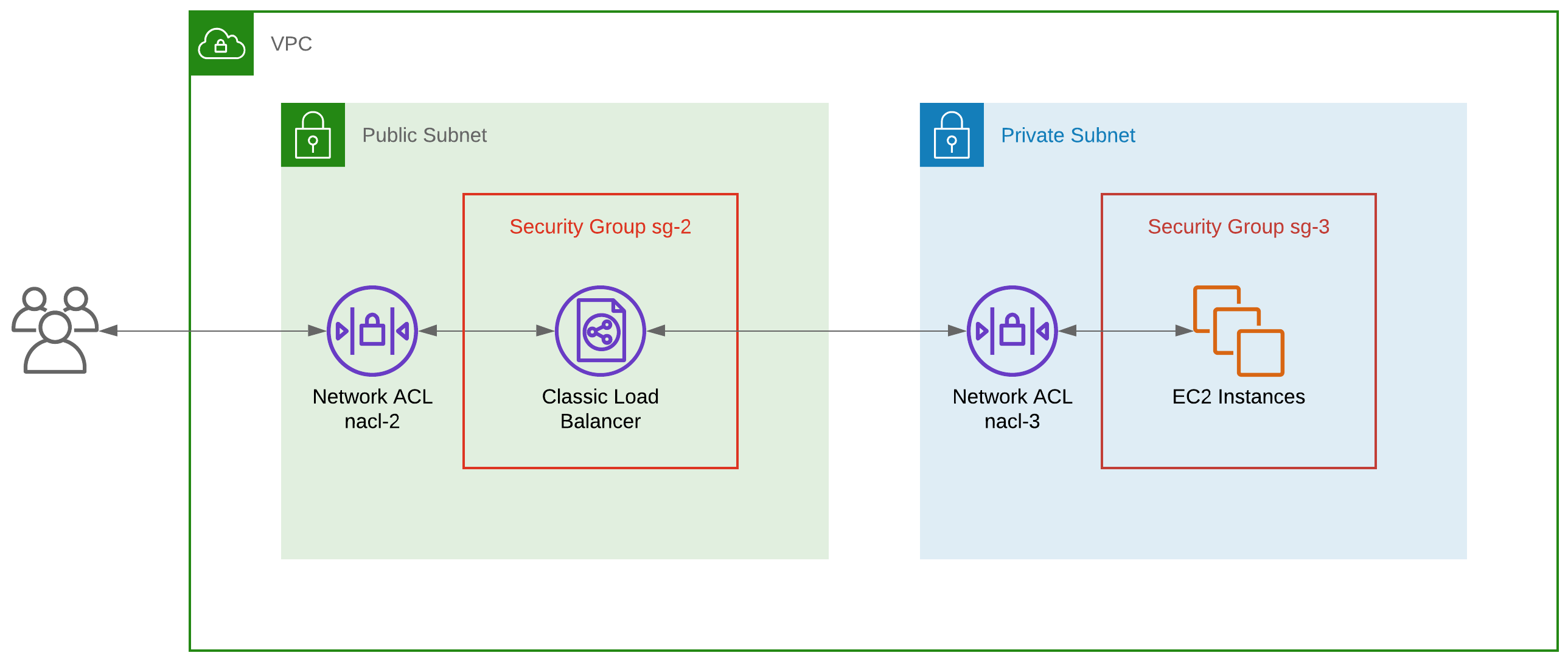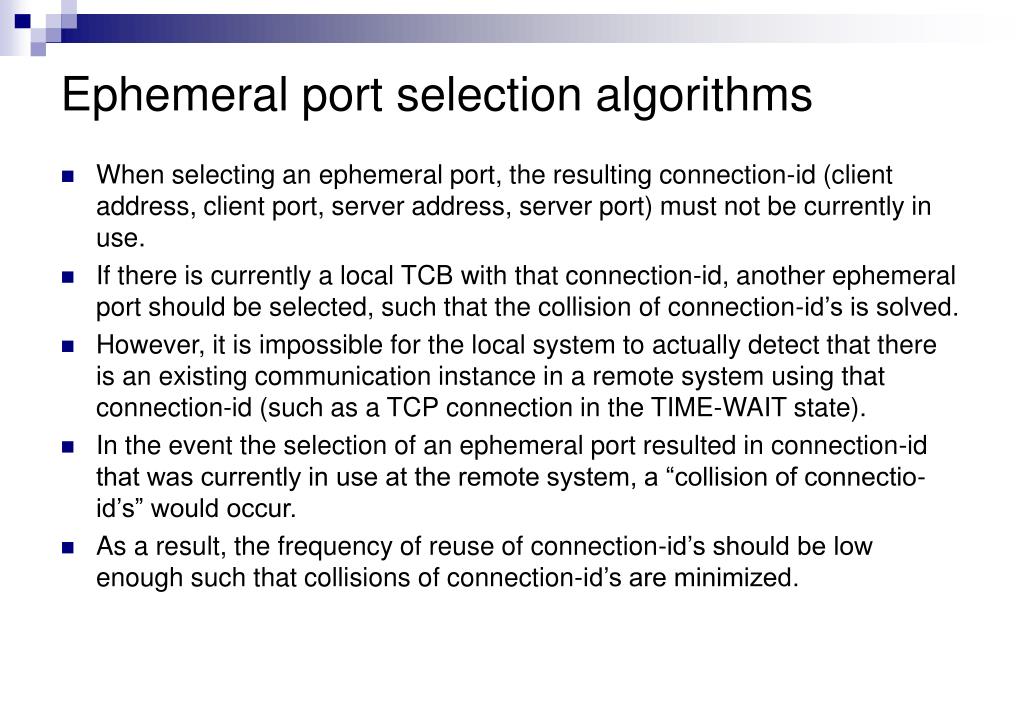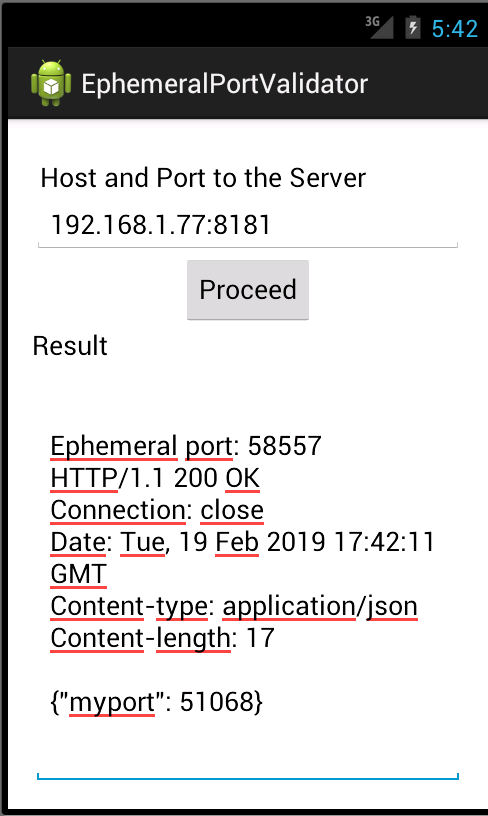
This allows retransmitted TCP packets, already in-flight to arrive and be discarded before the source port number is allowed to be reused by another application. When a TCP connection is completed, TCP will typically place the 4-tuple into TCP Time Wait state. Hence many processes on many different hosts can connect to the well-known service port on a single host, but each connection will have a unique pair of source IP address and source TCP port.

When processes connect to a service, they bind a port from the ephemeral port range to use as the source port. Hence services cannot easily be relocated to a different port number without impact the configuration of all connecting clients.

Each client processes must have prior knowledge of that port number in order to connect.

The latter application will likely be confused by the unexpected data, react in an unexpected way, and most likely fail.Įach service must be listening on a well-known TCP port. If they are not unique, data within a TCP packets intended for one application may be delivered to a different application. TCP requires that the 4-tuple of source IP address, source port number, destination IP address, and destination port number be unique for each TCP connection on the host. When a port range is exhausted, applications are unable to obtain a port for inter process connections and will fail.Įach TCP connection, inter-host or intra-host, is from a source TCP port number to a destination TCP port number. Operating systems have a fixed number of TCP ports, a subset of which are in the ephemeral port range. The impact should be almost exclusive to the master server, but a media server supporting many hundreds of concurrent jobs might also be affected to some extent.Ĭaution: Starting a thousand or more restore job streams simultaneously also has the potential to exhaust the ephemeral port range on a NetBackup 8.1+ master server if the media servers are also at NetBackup 8.1+. The increased number of concurrent connections will reduce the amount of memory available for other processing and may slow the performance of applications. Further, each TCP end-point also consumes non-swapable kernel memory for the TCP Send and Receive queues.
#Ephemeral port windows
Sites that have many or all backup windows configured to open simultaneously may find that their platforms and NetBackup now have the capacity to saturate the ephemeral port window, which can lead to connection and job failures. Sites that spread their backup and duplication windows throughout the night/weekend/day are unlikely to see any effect, other than jobs going from Queued to Active more quickly (until the concurrent per policy/client/storage limits are reached). This will allow jobs to go active more quickly, and will increase the concurrent connection and port usage in the seconds and minutes immediately following when a backup window opens. Note: NetBackup 8.2+ also no longer limits the startup of backup jobs to 1 job per second. NetBackup 8.2 removed the need for some connections and shortened the lifespan of others. NetBackup 8.2 roughly halved the ephemeral port use added by secure communication connections. NetBackup 8.1 significantly increased ephemeral port use when introducing secure communication connections. NetBackup 7.1 minimized service port use by allowing many legacy services to accept connections via PBX. NetBackup 4.5 minimized ephemeral port use by deprecating legacy call-back. However, certain new features and functionality have also expanded the number of ports potentially in concurrent use. NetBackup has made design and implementation changes over the years to minimize the number of ports needed for concurrent operation. Computing hosts have become bigger, faster, and more interconnected (memory, CPU, network interfaces, I/O devices, etc.), but the limitations of TCP port availability have remained largely unchanged for decades.

The goal is to allow NetBackup to perform as many operations as possible, as quickly as possible, without conflict. Otherwise applications may receive the wrong data, that was intended for a previous process, and either fail or behave in an unexpected fashion.
#Ephemeral port how to
Second, how to ensure that recently used TCP ports can be safely reused by other processes. When the range is exhausted applications must fail, although many - NetBackup included - will retry briefly in hopes one does become available quickly. First, how to ensure that as many TCP ports as possible are available for application use.


 0 kommentar(er)
0 kommentar(er)
